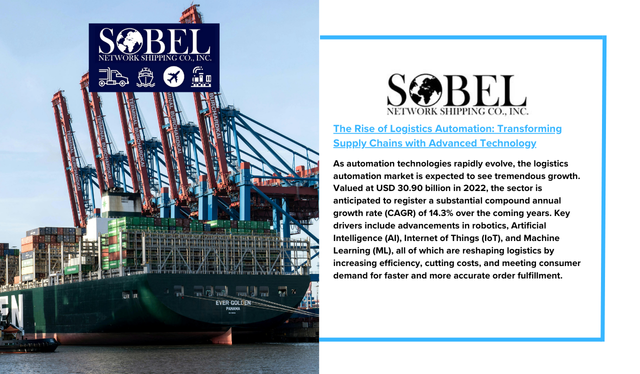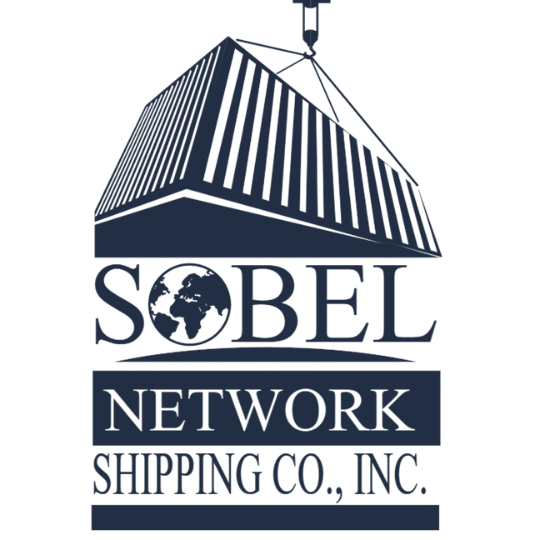As automation technologies rapidly evolve, the logistics automation market is expected to see tremendous growth. Valued at USD 30.90 billion in 2022, the sector is anticipated to register a substantial compound annual growth rate (CAGR) of 14.3% over the coming years. Key drivers include advancements in robotics, Artificial Intelligence (AI), Internet of Things (IoT), and Machine Learning (ML), all of which are reshaping logistics by increasing efficiency, cutting costs, and meeting consumer demand for faster and more accurate order fulfillment.
How Automation is Revolutionizing Logistics
In warehouses and distribution centers, automation has transformed traditional operations by reducing manual interventions. Robots work in concert with advanced computer systems to streamline processes, enhance storage solutions, and minimize errors. As logistics continues to adopt these innovations, companies are seeing improved order accuracy and reduced delivery times—essential benefits in today’s fast-paced supply chain environment.
Cost-Effective Solutions and Real-Time Tracking
Automation’s potential to reduce operational expenses is significant. Amazon, for instance, utilizes over 200,000 robots across its warehouses for tasks such as order picking, where AI and ML analyze data to improve warehouse layout and predict inventory demand. Additionally, IoT technologies, including RFID tags and sensors, offer real-time tracking, optimizing supply chain visibility and efficiency.
Overcoming Skill Shortages in Automation
Despite promising advancements, logistics automation faces hurdles, notably in the shortage of skilled workers who can operate and maintain complex systems. This skill gap slows down automation adoption; to address it, many companies are investing in training programs to upskill their workforce.
Market Segmentation Insights
The logistics automation market spans various components, logistics types, organization sizes, and regions. Here’s a closer look at the segmentation insights:
- By Components: Hardware, including robots and conveyors, constitutes the largest segment, while software solutions like warehouse and transportation management systems are also witnessing growth as companies embrace data-driven logistics.
- By Logistics Type: Production logistics is expected to drive market expansion due to automation in manufacturing, while sales logistics is growing with the rise of e-commerce, fueling demand for automated order fulfillment and inventory management.
- By Organization Size: Large enterprises lead the charge in investing in robotics and AI-driven analytics, while small and medium-sized enterprises (SMEs) are gradually adopting automation for order processing, supported by government incentives.
Regional Trends in Logistics Automation
Regional demand for logistics automation is on the rise, particularly in North America, Europe, and Asia-Pacific. North America benefits from substantial corporate investments in AI and robotics. Europe is leveraging robotics to streamline logistics, while in Asia-Pacific, the growth of e-commerce and manufacturing expansion is driving adoption.
Competitive Landscape in Logistics Automation
The logistics automation market is competitive, with major players like Dematic, Vanderlande Industries, Amazon Robotics, and Locus Robotics leading the charge. Companies are focused on strategic partnerships, acquisitions, and innovations to introduce new solutions that meet the evolving needs of logistics providers.
Industry Developments and Innovations
Recent developments highlight the industry’s rapid progression:
- In September 2023, Flexport introduced a comprehensive global commerce system that simplifies supply chain management for business owners, allowing them to prioritize customer satisfaction and sales growth.
- In August 2022, Smart Robotics launched the Smart Fashion Picker, a collaborative robot (cobot) for the warehouse industry, which has been slower to adopt automation but is now accelerating toward modernized operations.
Conclusion
The logistics automation market is on an upward trajectory, driven by transformative technologies that are reshaping supply chains. With continued innovations, ongoing investments, and strategic regional growth, the future of logistics is undoubtedly automated, delivering unprecedented efficiency, accuracy, and customer satisfaction.
Explore more insights on how logistics automation is evolving the supply chain at Sobel Net, where we cover the latest in logistics, technology, and automation trends.


